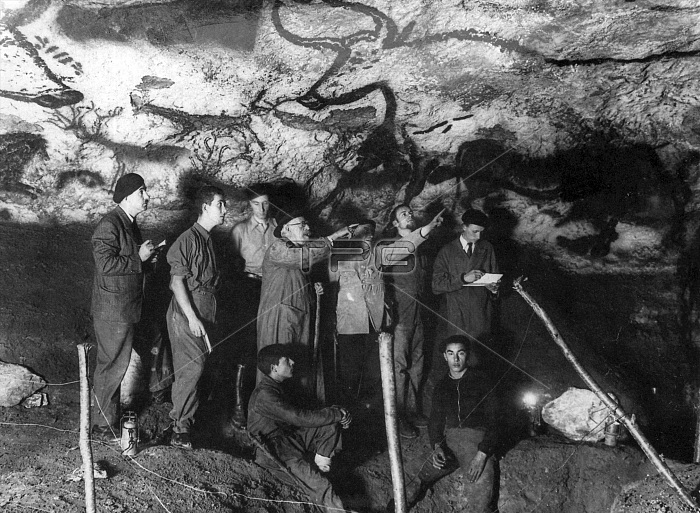
Lascaux (Lascaux Caves) is the setting of a complex of caves in southwestern France. They contain some of the best preserved and most spectacular works of Upper Paleolithic art, made by early humans. These paintings are estimated to be 17,300 years old. There are more than 600 paintings of horses, cows, bulls, stags, wolves, bears, lions and a rhinoceros, some even 15 feet long. In 1940, the the entrance to Lascaux Cave was discovered by Marcel Ravidat. He returned to the scene with three friends, Jacques Marsal, Georges Agnel, and Simon Coencas, and entered the cave via a long shaft. The four teenagers discovered that the cave walls were covered with depictions of animals. They kept their find a secret for a week, after which they informed their school teacher about it. In 1979, Lascaux was added to the UNESCO World Heritage Sites. Photograph originally captioned: Historic visit in 1940 by the light of acetylene lamps, In the middle, with arms outstretched, are Abbe Breuil and Count Begouen. Seated in front of them, Jacques Marsal, left, and Marcel Ravidat, right.
| px | px | dpi | = | cm | x | cm | = | MB |
Details
Creative#:
TOP22163501
Source:
達志影像
Authorization Type:
RM
Release Information:
須由TPG 完整授權
Model Release:
No
Property Release:
No
Right to Privacy:
No
Same folder images:

 Loading
Loading